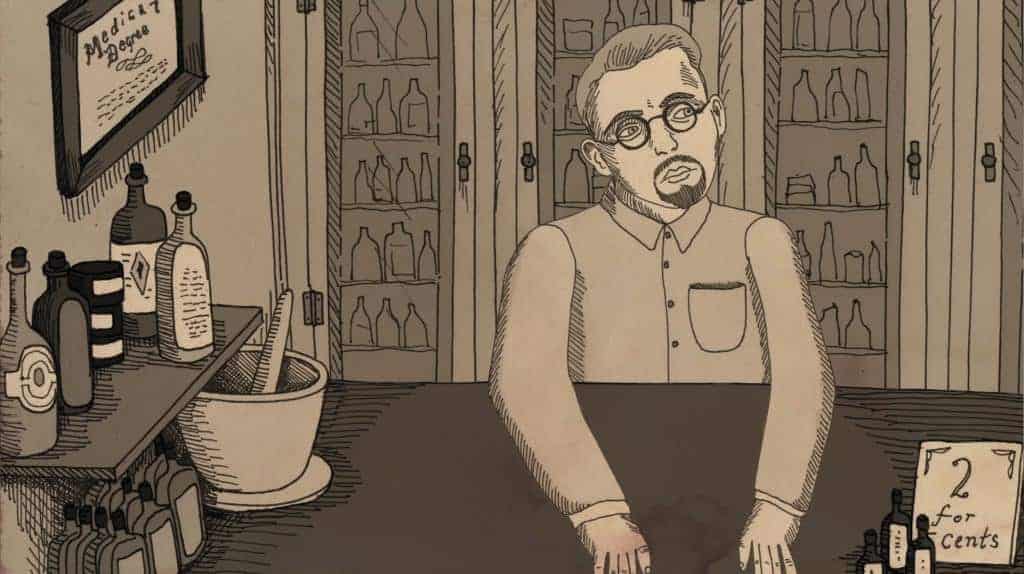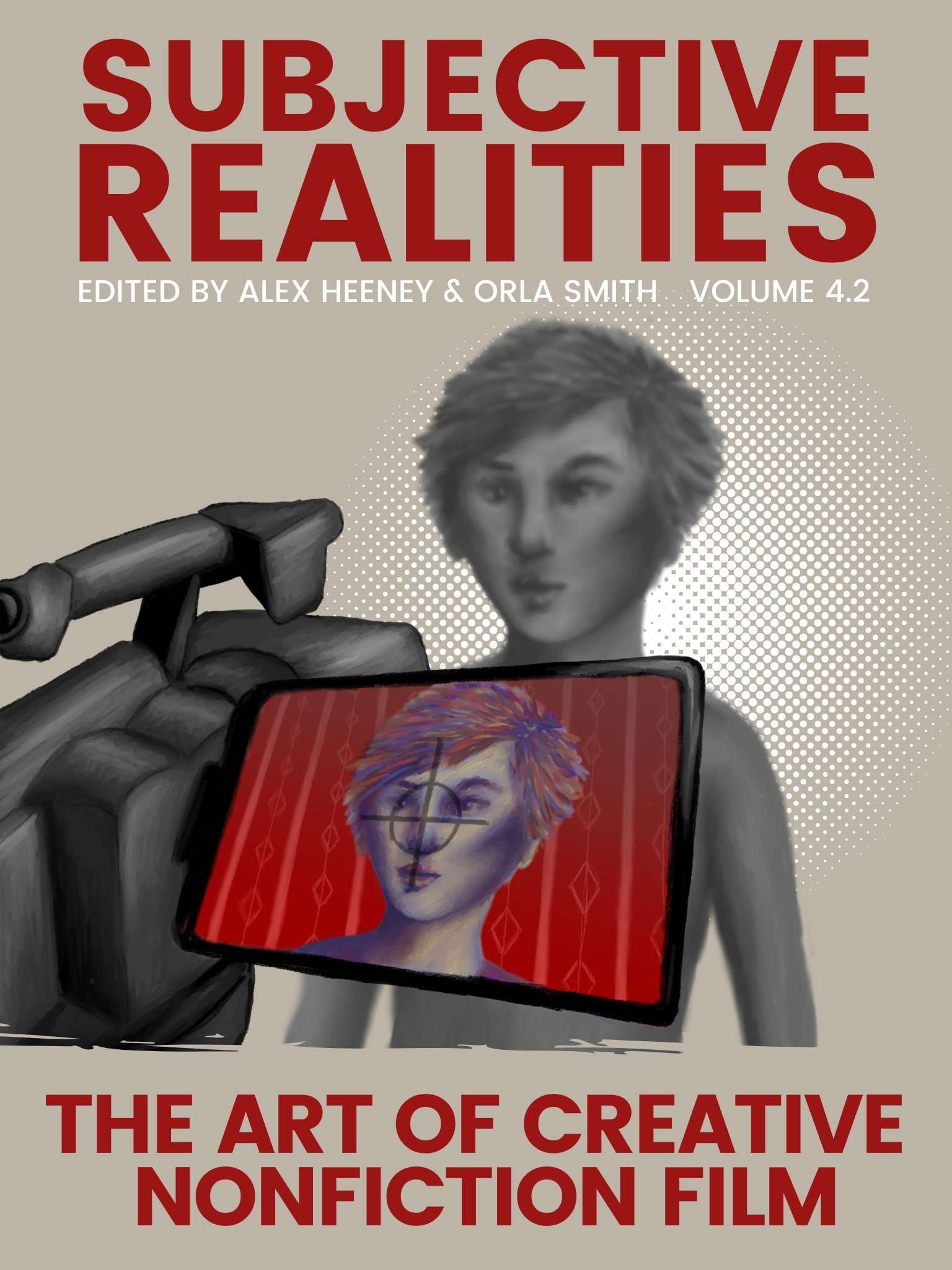Penny Lane (Our Nixon) discusses NUTS!, the importance of pacing in her creative nonfiction exploration of pseudoscience, why they used animated re-enactments, and how to think about documentary film. This is an excerpt from the ebook In Their Own Words: Documentary Masters Vol. 1. To read the full interview, purchase a copy of the ebook here.

Penny Lane’s marvelous documentary NUTS! just picked up the U.S. Documentary Special Jury Award for Editing with her co-writer Thom Stylinski. The film chronicles the life and work of Dr. John Brinkley, who made his name by transplanting goat testicles into infertile men, making liberal use of animated re-enactments. During the festival, Penny Lane talked to us about the importance of pacing in the film, why they used animated re-enactments, and how to think about documentary film.
Seventh Row (7R): How did you think about how to address science versus pseudoscience in NUTS!?
Penny Lane (PL): I did think about having more context around those questions. For the movie to work, it had to be seductive, colourful, charming, fast, and it had to keep you entertained so you didn’t have time to engage your critical capacities. The pacing actually slows down in the second act. As the claims he’s making are getting more ridiculous, you also get a minute of home movies, some time to think for the first time.
It takes about forty minutes before I give you ten seconds to think about what I’m saying. I steal that from conspiracy theory filmmakers. They’re like [makes a revving fast sound]. And you’re like, “My mind is being blown!” As soon as you hit pause, to go the bathroom, you’re like, “Wait a minute!” Because you don’t have time to stop and consider the claims being made. That’s very intentional.
Whenever I imagined, let’s stop and give some historical context or let’s stop and explain the definition of pseudoscience, it took you out of the magic. That’s exactly what Brinkley would not want. He would never do that: stop entertaining you and give you some important information. He’d be like, “I’ve got to keep going, keep you under my spell.”
Listen to our podcast with Penny Lane (NUTS!)
Penny Lane discusses her latest doc, Hail Satan, on the Seventh Row podcast.
7R: Did the pacing for NUTS! come about in the edit or was that part of how it was scripted?
Penny Lane: It took 8 years. There were a lot of ideas that didn’t work. I probably spent 2 years on an idea that didn’t work. After I figured out that we’d have these animated re-enactments, then a lot of the creative ideas were pretty solid and formed. That was 5 years ago.
The first time I ever wrote to my writer, I asked him to read my script to help me think about the narrative part. What should the tone of the narrative be? Should be a folksy “Come on, kids! I’m going to tell you a tall tale!” or should it be a kind of Richard Attenborough nature documentary. I ended up going with the blandest. The answer was that it had to be the most boring narrator ever.
7R: So as to not draw attention to itself.
Penny Lane: Right.
To read the rest of the interview with Penny Lane on NUTS!, purchase a copy of the ebook In Their Own Words: Documentary Masters Vol. 1 here.
[wcm_restrict]

7R: Where did the idea to animate NUTS! come from?
Penny Lane: We knew we needed re-enactments. As an artist, you choose your constraints. I liked the constraints of animation, and I liked the possibilities of animation. Tom, my writer, and I both thought that this would be amazing if we’re able to pull it off. The different animators, by literally redrawing the same characters, the same scenes, the same stories, will be able to underscore, visually, this idea that there are different versions of the story. There’s different version of John Brinkley. He’s the heroic chapter two maverick doctor. In chapter four, he’s the creepy, Jesus-comparing, “I am your saviour”, megalomaniacal, selling garbage to people. We thought that different animators, different artists, will have different styles, even without telling them to. If you took a drawing I made and traced it, it would still look like your drawing, weirdly.
7R: Were you inspired by other documentaries for thinking about animation?
Penny Lane: Nope, couldn’t find one. I tried. I don’t really like animated documentaries. So I was quite concerned. I thought that if this movie is bad, it’s going to be because the animation is bad. So how do I make sure the animation isn’t bad? I’m not an animator, so I can’t guarantee it.
The most influential film on this film was Exit Through the Gift Shop. I knew that I wanted to make a movie that was incredibly entertaining and super funny. Also, I wanted it to be catnip to a certain kind of intellectual. I had no model for this. I couldn’t think of a documentary that I could say, “see, it’s possible.” And then Exit came out. Because 99% of those Netflix reviews are like, “What a kooky guy! Five stars!”. It’s just a fun movie. People don’t have to think deeply to enjoy it. But other people, like me, are still arguing about it to this day. I don’t know what was true, what was real, what was scripted. Who was Banksy anyway? You think, what is the nature of reality?
[quote type = center] By literally redrawing the same characters, the different animators will be able to underscore, visually, that there are different versions of the story [/quote]
7R: How do you think about what is documentary and what is the line between documentary and fiction? Or maybe you prefer the term non-fiction?
Penny Lane: I prefer non-fiction only because documentary is so laden with boring connotations of the things you watch in school when your teachers don’t feel like teaching. It’s a venerable tradition, and I honor that. But a lot of people in my generation were gravitating toward non-fiction because if you think about non-fiction writing, there’s all these genres. There’s memoir, creative non-fiction, journalism. When you’re a writer, you have all these slots you can put yourself in. It helps to communicate to your audience a lot more about your process, your intention, your relationship to questions like “when is it appropriate to diverge from the known facts? When is it appropriate to speculate? When is it appropriate to condense?”
For better or worse, in writing, there are these sub-categories within non-fiction. I find it quite useful to borrow those. To say that NUTS! is creative non-fiction is helpful, if people knew what that meant. It’s more descriptive than documentary. Somebody might say that this isn’t a documentary, and I’d know what they mean. It’s kind of not. It’s kind of a fiction film that just happens to have non-fiction elements. To say it’s creative non-fiction would be helpful to communicate to an audience what’s happening. That being said, people are smarter than we think they are. The very first shot of my film is an animated shot of goats having sex. I am a little bit showing my cards.
There will be people that are mad at this movie because they’ll feel like I fooled them, and they didn’t like it.
7R: But that’s the point. I like that you put us in the shoes of the people that were interacting with Brinkley.
Penny Lane: Right, because how boring would it be to be like, “Oh, look at these dummies. How could they be so dumb?” But I’m like, “Oh you’re that dumb. Trust me, we’re all that dumb.” If we’re manipulated the right way, we’re all that dumb. And I know my audience. I know my audience likes alternative medicine. I know my audience likes alternative media. I know my audience probably dislikes the Federal Communications Commission and the AMA. I play that up a bit in the first act. It’s not hard to win sympathy for Brinkley, if you know your audience and you know the kind of story they want to hear.
[/wcm_restrict]
Read our review of NUTS! here.



